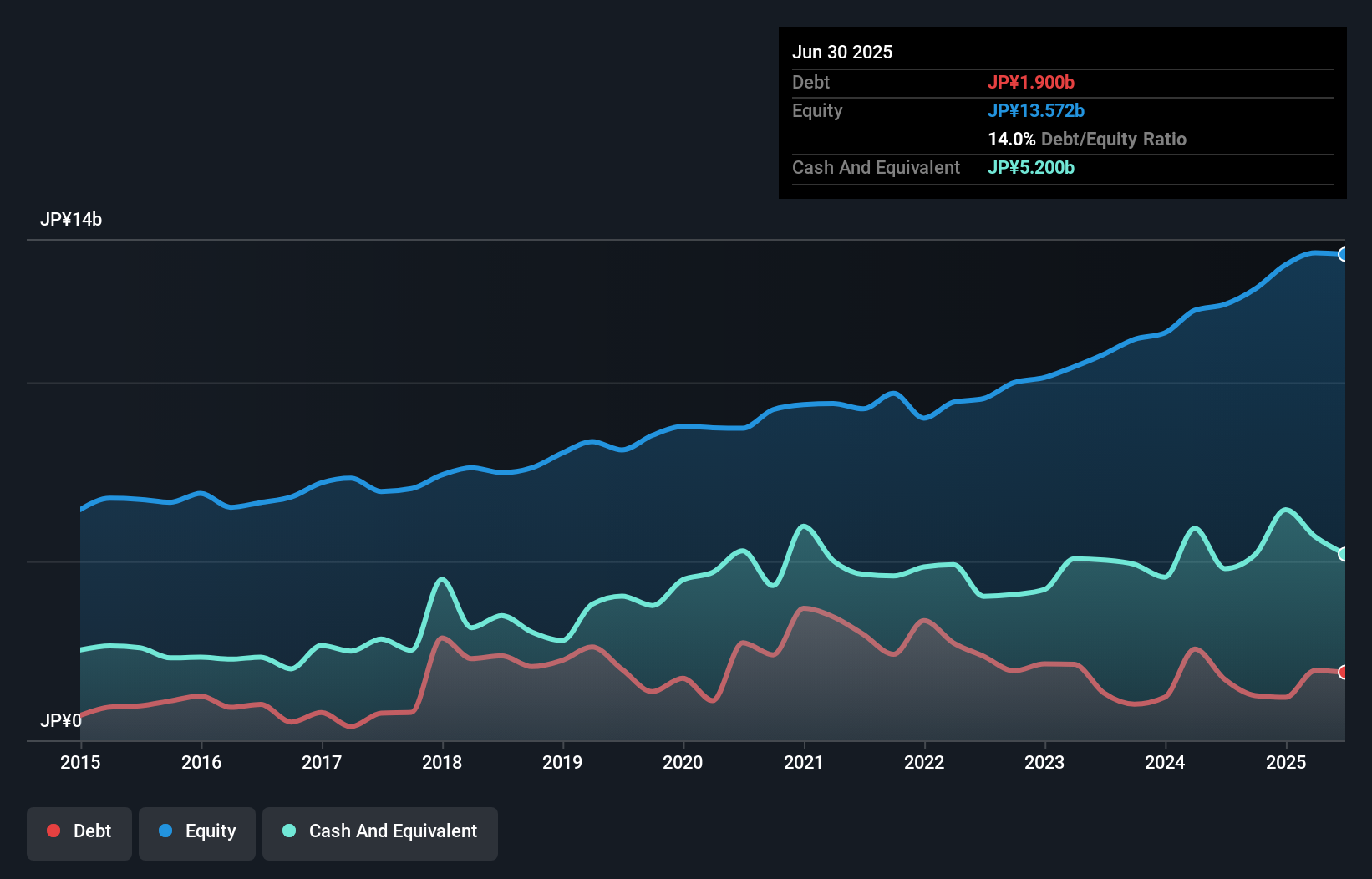The external fund manager backed by Berkshire Hathaway's Charlie Munger, Li Lu, makes no bones about it when he says 'The biggest investment risk is not the volatility of prices, but whether you will suffer a permanent loss of capital.' So it might be obvious that you need to consider debt, when you think about how risky any given stock is, because too much debt can sink a company. We note that ID Holdings Corporation (TSE:4709) does have debt on its balance sheet. But should shareholders be worried about its use of debt?
When Is Debt Dangerous?
Generally speaking, debt only becomes a real problem when a company can't easily pay it off, either by raising capital or with its own cash flow. If things get really bad, the lenders can take control of the business. However, a more common (but still painful) scenario is that it has to raise new equity capital at a low price, thus permanently diluting shareholders. By replacing dilution, though, debt can be an extremely good tool for businesses that need capital to invest in growth at high rates of return. The first step when considering a company's debt levels is to consider its cash and debt together.
How Much Debt Does ID Holdings Carry?
As you can see below, at the end of June 2025, ID Holdings had JP¥1.90b of debt, up from JP¥1.70b a year ago. Click the image for more detail. But on the other hand it also has JP¥5.20b in cash, leading to a JP¥3.30b net cash position.

How Healthy Is ID Holdings' Balance Sheet?
According to the last reported balance sheet, ID Holdings had liabilities of JP¥6.81b due within 12 months, and liabilities of JP¥959.0m due beyond 12 months. Offsetting these obligations, it had cash of JP¥5.20b as well as receivables valued at JP¥6.48b due within 12 months. So it actually has JP¥3.91b more liquid assets than total liabilities.
This surplus suggests that ID Holdings has a conservative balance sheet, and could probably eliminate its debt without much difficulty. Succinctly put, ID Holdings boasts net cash, so it's fair to say it does not have a heavy debt load!
View our latest analysis for ID Holdings
On top of that, ID Holdings grew its EBIT by 52% over the last twelve months, and that growth will make it easier to handle its debt. The balance sheet is clearly the area to focus on when you are analysing debt. But it is ID Holdings's earnings that will influence how the balance sheet holds up in the future. So if you're keen to discover more about its earnings, it might be worth checking out this graph of its long term earnings trend.
Finally, a company can only pay off debt with cold hard cash, not accounting profits. ID Holdings may have net cash on the balance sheet, but it is still interesting to look at how well the business converts its earnings before interest and tax (EBIT) to free cash flow, because that will influence both its need for, and its capacity to manage debt. During the last three years, ID Holdings produced sturdy free cash flow equating to 70% of its EBIT, about what we'd expect. This free cash flow puts the company in a good position to pay down debt, when appropriate.
Summing Up
While it is always sensible to investigate a company's debt, in this case ID Holdings has JP¥3.30b in net cash and a decent-looking balance sheet. And it impressed us with its EBIT growth of 52% over the last year. So we don't think ID Holdings's use of debt is risky. There's no doubt that we learn most about debt from the balance sheet. But ultimately, every company can contain risks that exist outside of the balance sheet. Case in point: We've spotted 1 warning sign for ID Holdings you should be aware of.
At the end of the day, it's often better to focus on companies that are free from net debt. You can access our special list of such companies (all with a track record of profit growth). It's free.
New: AI Stock Screener & Alerts
Our new AI Stock Screener scans the market every day to uncover opportunities.
• Dividend Powerhouses (3%+ Yield)
• Undervalued Small Caps with Insider Buying
• High growth Tech and AI Companies
Or build your own from over 50 metrics.
Have feedback on this article? Concerned about the content? Get in touch with us directly. Alternatively, email editorial-team (at) simplywallst.com.
This article by Simply Wall St is general in nature. We provide commentary based on historical data and analyst forecasts only using an unbiased methodology and our articles are not intended to be financial advice. It does not constitute a recommendation to buy or sell any stock, and does not take account of your objectives, or your financial situation. We aim to bring you long-term focused analysis driven by fundamental data. Note that our analysis may not factor in the latest price-sensitive company announcements or qualitative material. Simply Wall St has no position in any stocks mentioned.
About TSE:4709
Flawless balance sheet with solid track record and pays a dividend.
Market Insights
Community Narratives



